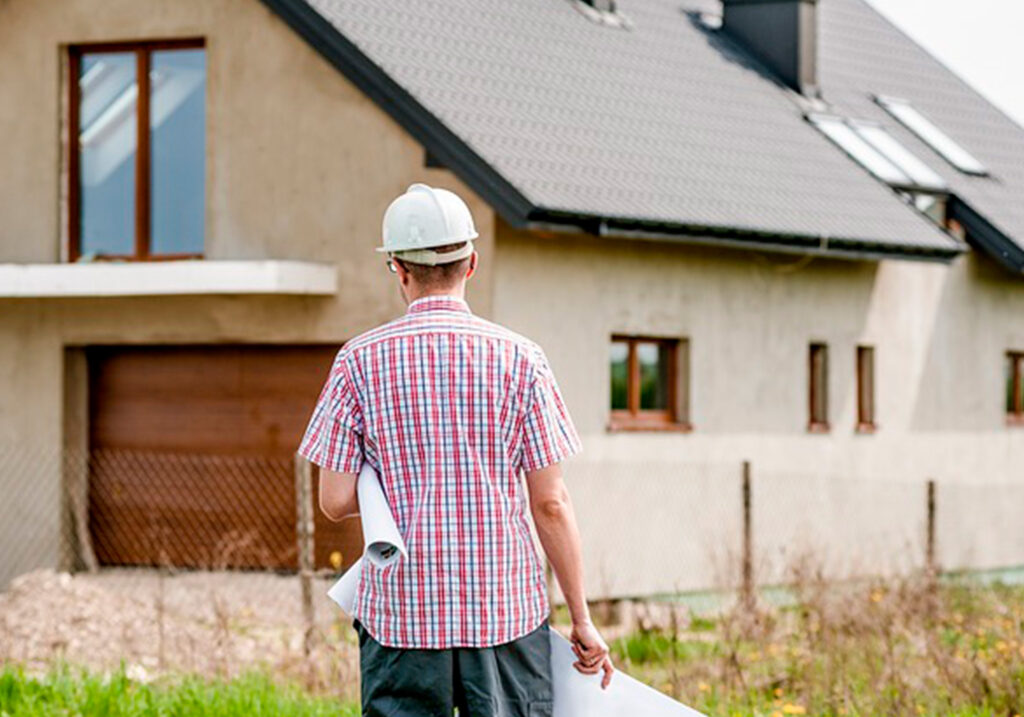In the past decade or so, the construction industry has seen a marked shift toward more efficient and durable construction methods. Builders also want something that is cost-effective.
One of the most exciting advancements has been the rise of prefabricated buildings, and this trend has extended to various sectors, including agricultural and industrial construction. Among the various types of prefabricated buildings, the question often arises: Is there such a thing as prefabricated steel barns?
The answer is yes. Prefabricated steel barns are becoming increasingly popular due to their many advantages, including cost savings, speed of construction, and resilience to harsh weather conditions. In this article, we will explore what prefabricated steel barns are, how they are built, their advantages and disadvantages, and why they are gaining traction in the agricultural and industrial sectors.
What are Prefabricated Steel Barns?
A prefabricated steel barn is a type of agricultural building that is manufactured off-site and then delivered to the construction site for assembly. These barns are made from steel, a material known for its strength, durability, and flexibility. Unlike traditional wooden barns, which require construction from the ground up at the building site, prefabricated steel barns are pre-engineered and pre-fabricated in a factory setting. This means that all the components—such as steel beams, panels, trusses, and roofing—are produced in a controlled environment before being shipped to the site.
Prefabricated steel barns come in various sizes and configurations depending on the specific needs of the buyer. They can be used for a wide range of purposes, including livestock housing, equipment storage, hay storage, workshops, and even as residential properties. The modular design of these barns allows for customization in terms of layout, size, and additional features, ensuring that each barn can be tailored to suit the owner’s unique requirements.
How Are Prefabricated Steel Barns Built?
The construction process of a prefabricated steel barn is notably different from that of a traditional wooden barn. It involves several key stages, starting with the design and planning phase, moving through the manufacturing and delivery stages, and finally culminating in the assembly process. Below is a breakdown of how prefabricated steel barns are built:
- Design and Planning: The process begins with detailed planning and design. Homeowners or business owners work with architects or manufacturers to outline the specifications of the barn, including its dimensions, layout, and any special features. Customizations can be made to accommodate specific agricultural needs, such as larger doorways for machinery or extra insulation for temperature control. These blueprints are then used to create the components of the barn in the factory.
- Manufacturing: After the design phase, the barn components are manufactured in a factory. The steel parts are cut, welded, and shaped into the necessary sections. Precision machinery is used to ensure each piece fits perfectly with the others. These components typically include steel framing, roof panels, wall panels, doors, windows, and insulation. By using advanced manufacturing techniques, prefabricated steel barns can be produced with high accuracy, leading to faster and more efficient assembly on-site.
- Transportation: Once the components are ready, they are carefully packed and transported to the construction site. Steel components are usually shipped on flatbed trucks or trailers, depending on their size and weight. Efficient transportation logistics are crucial in ensuring that the materials arrive on time and in good condition.
- Assembly: Once the materials arrive at the site, construction crews begin the assembly process. Unlike traditional barns that require extensive on-site labor, prefabricated steel barns are assembled quickly due to their modular design. Workers follow the pre-engineered plans to bolt together the steel components. The framing is erected first, followed by the walls, roof panels, and other features. This process can take as little as a few days or weeks, depending on the size and complexity of the barn.
- Finishing Touches: After the structure is complete, finishing touches are added to the barn. These may include installing insulation, electrical systems, doors, windows, and other design elements that make the barn functional for its intended purpose. At this point, the barn is ready for use.
Advantages of Prefabricated Steel Barns
Prefabricated steel barns offer several advantages over traditional wooden barns and other types of agricultural buildings. These benefits are a key reason why they have become such a popular choice in the agricultural sector.
- Cost-Effective: One of the most significant advantages of prefabricated steel barns is their cost-effectiveness. Because they are manufactured off-site in a controlled factory environment, the cost of materials and labor is reduced. Additionally, the construction process is faster, which means that labor costs are minimized. The materials used in steel barns are also relatively inexpensive compared to other building materials, such as wood or brick.
- Speed of Construction: Prefabricated steel barns are much quicker to assemble than traditional barns. While conventional wooden barns can take several months to construct, a prefabricated steel barn can be up and running in a matter of weeks or even days. This speed of construction is particularly important for farmers and business owners who need to put their barns into use quickly.
- Durability and Strength: Steel is an incredibly strong material that can withstand extreme weather conditions. Prefabricated steel barns are highly resistant to factors such as strong winds, heavy snow, and even fire. Unlike wooden barns, which are vulnerable to termites, rot, and other forms of damage, steel barns provide long-lasting protection for livestock, equipment, and other assets.
- Customization: Prefabricated steel barns can be easily customized to suit the specific needs of the owner. Whether it’s adding extra doors for machinery access, creating open space for livestock, or incorporating storage for tools, these barns can be tailored to meet a wide range of requirements. Additionally, modern design software allows for even more precise customization in terms of layout and features.
- Low Maintenance: Steel barns are relatively low-maintenance compared to wooden barns. Steel is resistant to pests, mold, and decay, meaning that the owner won’t have to spend time and money on repairs or upkeep. A prefabricated steel barn can last for decades with minimal maintenance, making it a cost-effective investment in the long term.
- Energy Efficiency: Many prefabricated steel barns come with options for energy-efficient insulation, which helps regulate temperature and reduce heating and cooling costs. This is particularly important for barns that house animals or equipment that need to be kept at a consistent temperature. The energy efficiency of these buildings contributes to lower operational costs and a smaller environmental footprint.
Disadvantages of Prefabricated Steel Barns
While prefabricated steel barns offer a number of benefits, there are also some potential disadvantages to consider before opting for this type of structure.
- Initial Cost: While prefabricated steel barns are generally cost-effective in the long run, the initial cost can be higher than traditional wood barns, particularly if additional customizations or high-end materials are involved. The cost of steel itself can fluctuate, so it’s important to account for these variations when budgeting for a new barn.
- Aesthetic Considerations: Some people prefer the traditional look of a wooden barn, particularly in rural or agricultural settings. Steel barns may not blend into the surrounding landscape as seamlessly as wooden barns, and some owners may not find the industrial aesthetic of steel barns appealing. However, customization options, such as adding siding or a faux wood finish, can help address this concern.
- Transportation and Delivery: While the transportation of prefabricated steel parts is generally efficient, it can still be costly, especially if the construction site is far from the manufacturing facility. Large components may also require special permits or handling during transportation, which can add additional costs to the project.
- Skilled Labor Requirements: While the assembly process is faster, it still requires skilled labor to ensure that the steel components are assembled correctly. Depending on the location, it may be challenging to find contractors who are experienced in assembling prefabricated steel barns, which could lead to delays or added costs.
Why Are Prefabricated Steel Barns Gaining Popularity?
The growing popularity of prefabricated steel barns can be attributed to several factors, particularly their efficiency and durability. In today’s fast-paced agricultural world, farmers and business owners are looking for ways to increase productivity while reducing costs. Prefabricated steel barns provide an ideal solution, offering a quick, affordable, and reliable way to house livestock, store equipment, or create workshops. Additionally, with the increasing focus on sustainability and energy efficiency, prefabricated steel barns are becoming more attractive as they can be designed with energy-saving features and are less resource-intensive to construct compared to traditional barns.
As more people become aware of the advantages of prefabricated steel barns, their use is expected to continue to rise. From rural farmers to urban developers, these buildings offer a versatile, sustainable, and long-lasting solution that meets a wide range of needs. Whether used for agriculture, industry, or even as residential properties, prefabricated steel barns are proving to be a valuable investment that delivers on both functionality and performance.
Conclusion
Prefabricated steel barns are indeed a viable and growing construction option in the agricultural and industrial sectors. They offer significant advantages, including cost-effectiveness, durability, and speed of construction. As technology continues to improve, prefabricated steel barns will likely become even more customizable, efficient, and sustainable. While they may have some drawbacks, such as higher initial costs and aesthetic concerns, their benefits far outweigh the disadvantages for many owners. Ultimately, prefabricated steel barns represent the future of agricultural and industrial buildings, combining modern construction techniques with time-tested materials to create structures that are both functional and resilient.

